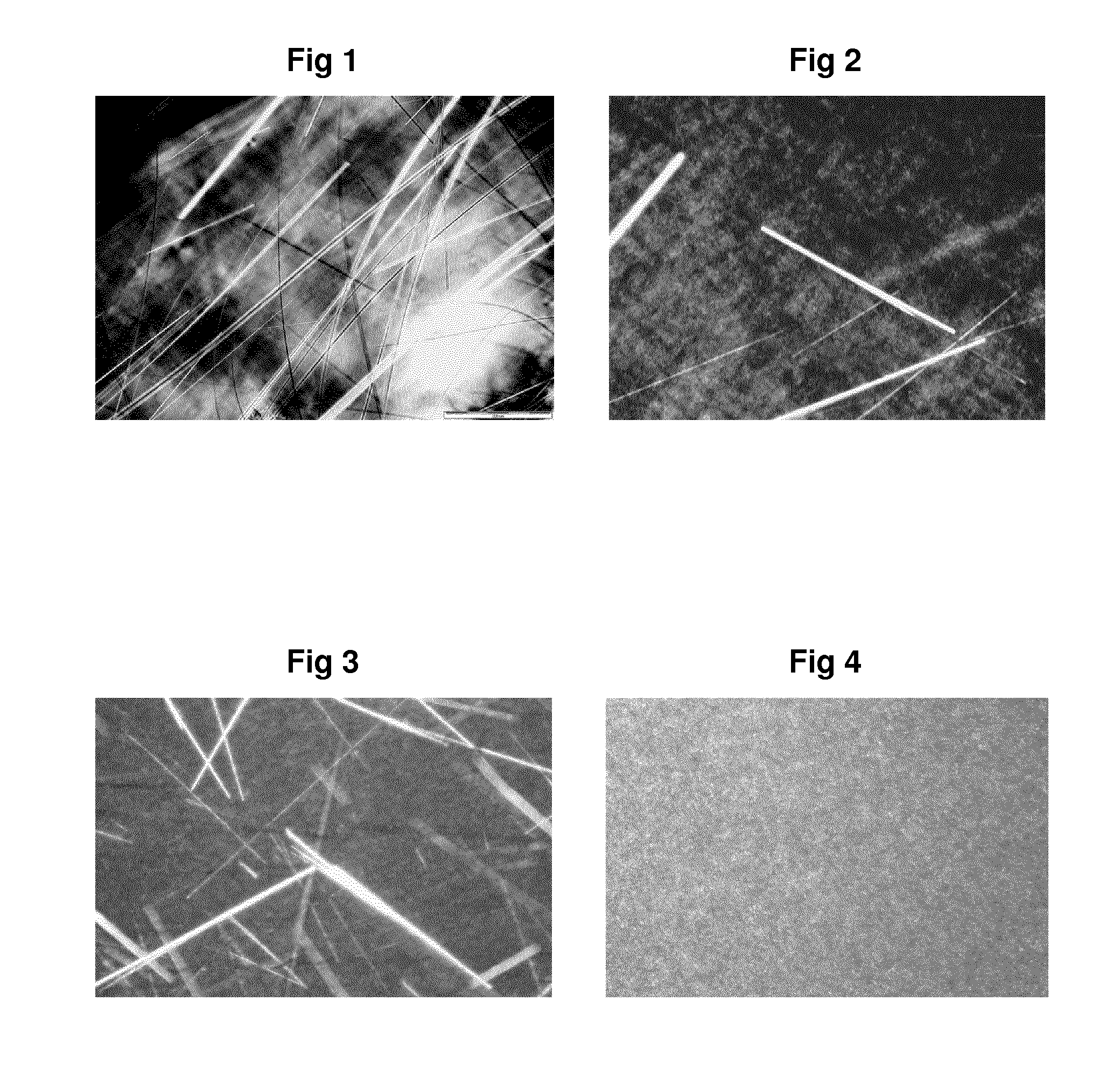Free flowing aqueous lamellar gel laundry detergent liquid comprising epei
a technology of lamellar gel and laundry detergent, which is applied in the preparation of detergent mixture compositions, detergent compounding agents, non-ionic surface active compounds, etc., can solve the problems of difficult addition of suitable levels of hedp, difficult inclusion of bleach, and isotropic liquids
- Summary
- Abstract
- Description
- Claims
- Application Information
AI Technical Summary
Benefits of technology
Problems solved by technology
Method used
Image
Examples
example 1
[0043]This shows how the selection of the type of tri-block polymer affects composition stability. The base formulation used for these stability examples contained 24 wt % active detergent consisting of linear alkyl benzene sulfonate salt (LAS salt), sodium salt of lauryl ether sulphate (SLES) and nonionic 7EO in a ratio of 2:1:1.5. It also contained, 4 wt % EPEI, 3% TexCare™ SRN 170, Potassium Hydroxide to neutralise the LAS acid to make LAS salt, 3 to 4 wt % Potassium acetate for a stable lamellar gel, and water.
[0044]Table 1 shows the stability of this base lamellar gel laundry liquid composition containing EPEI to which 1 wt % of different types of Pluronic material were added. Formulation storage stability is assigned to a 3 point scale:
[0045]0=No stability advantage over base formulation
[0046]1=Improved stability over base formulation
[0047]2=Best stability achieved, passes all stability tests (except 45° C.)
[0048]Key properties of each Pluronic material are also given in Table...
example 2
[0049]This shows the relative performance of different electrolytes. A lamellar gel detergent base liquid having from 24 to 27.5 wt % active detergent in the ratio, 2:1:1.5 LAS:SLES:NI, 4% EPEI, and 3% TexCare™ SRN 170 polyester soil release polymer was used for this example. The LAS was neutralised with Potassium Hydroxide and the amount of electrolyte used was 4 wt %.
[0050]Samples of each liquid were stored at room temperature for up to 1 month. If it occurred, crystallization usually appeared within a few days. Table 2 indicates the appearance after storage.
TABLE 2Electrolyte - gel formerAppearance after storageNaClCrystallisation, proper lamellar (vesicular)structureNa CitrateCrystallisation, no proper lamellarstructure inducedK AcetateNo crystals, proper lamellar (vesicular)structureKNO3No proper lamellar structure inducedK2SO4No proper lamellar structure inducedKClNo crystals, proper lamellar (vesicular)structureKSCNNo proper lamellar structure inducedKBrNo proper lamellar str...
example 3
[0051]From the initial electrolyte screening in Example 2 it can be seen that Potassium Acetate and Potassium Chloride both gave a good structure without crystallisation. Further work was done to optimise the level of inclusion and composition of suitable electrolyte systems to obtain a wide range of temperatures where stable gels could be formulated with the preferred Pluronic F68. The KCl and K Acetate were stored in a fully formulated lamellar liquid containing 24 wt % active detergent in a 2:1:1.5 LAS:SLES:NI ratio, 3 wt % TexCare™ SRN 170 soil release polymer, 4 wt % EPEI, and 0.5 wt % Pluronic F68. The results are given in Table 3.
TABLE 3Electrolyte systemStability in presence of F684% K AcetateStable at all Temperatures (Freeze / Thaw, 5° C., Room temp, 37° C. and 45° C.)(8-12 weeks stability at 45° C.)3% KClSome stability issues at 37° C. and 5° C.2% KCl2-4 weeks stability at 45° C.1% K Acetate
[0052]In this EPEI containing liquid the preferred acetate gives the best high tempe...
PUM
 Login to View More
Login to View More Abstract
Description
Claims
Application Information
 Login to View More
Login to View More - R&D
- Intellectual Property
- Life Sciences
- Materials
- Tech Scout
- Unparalleled Data Quality
- Higher Quality Content
- 60% Fewer Hallucinations
Browse by: Latest US Patents, China's latest patents, Technical Efficacy Thesaurus, Application Domain, Technology Topic, Popular Technical Reports.
© 2025 PatSnap. All rights reserved.Legal|Privacy policy|Modern Slavery Act Transparency Statement|Sitemap|About US| Contact US: help@patsnap.com



